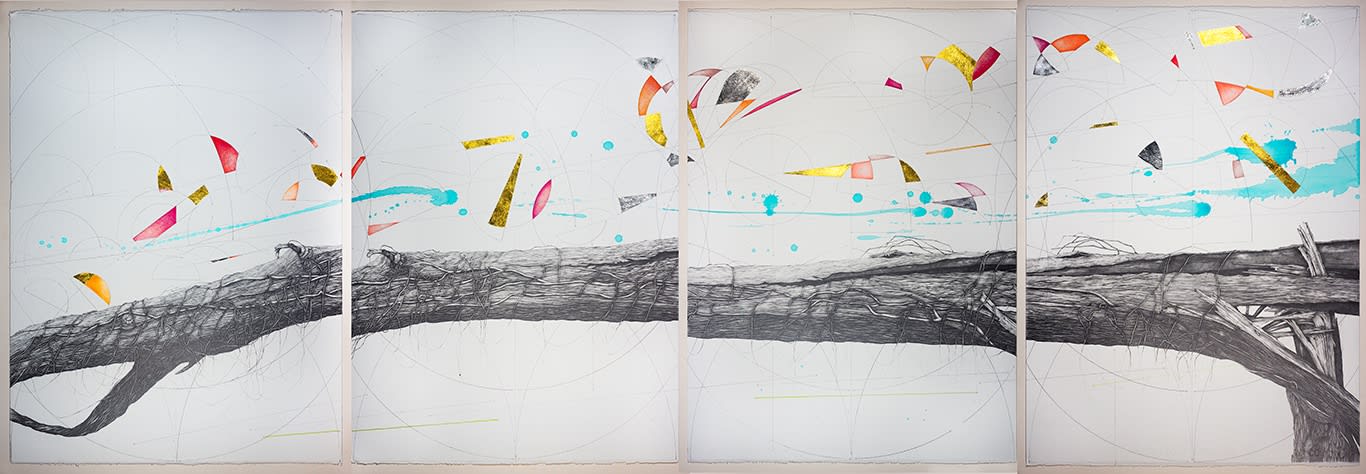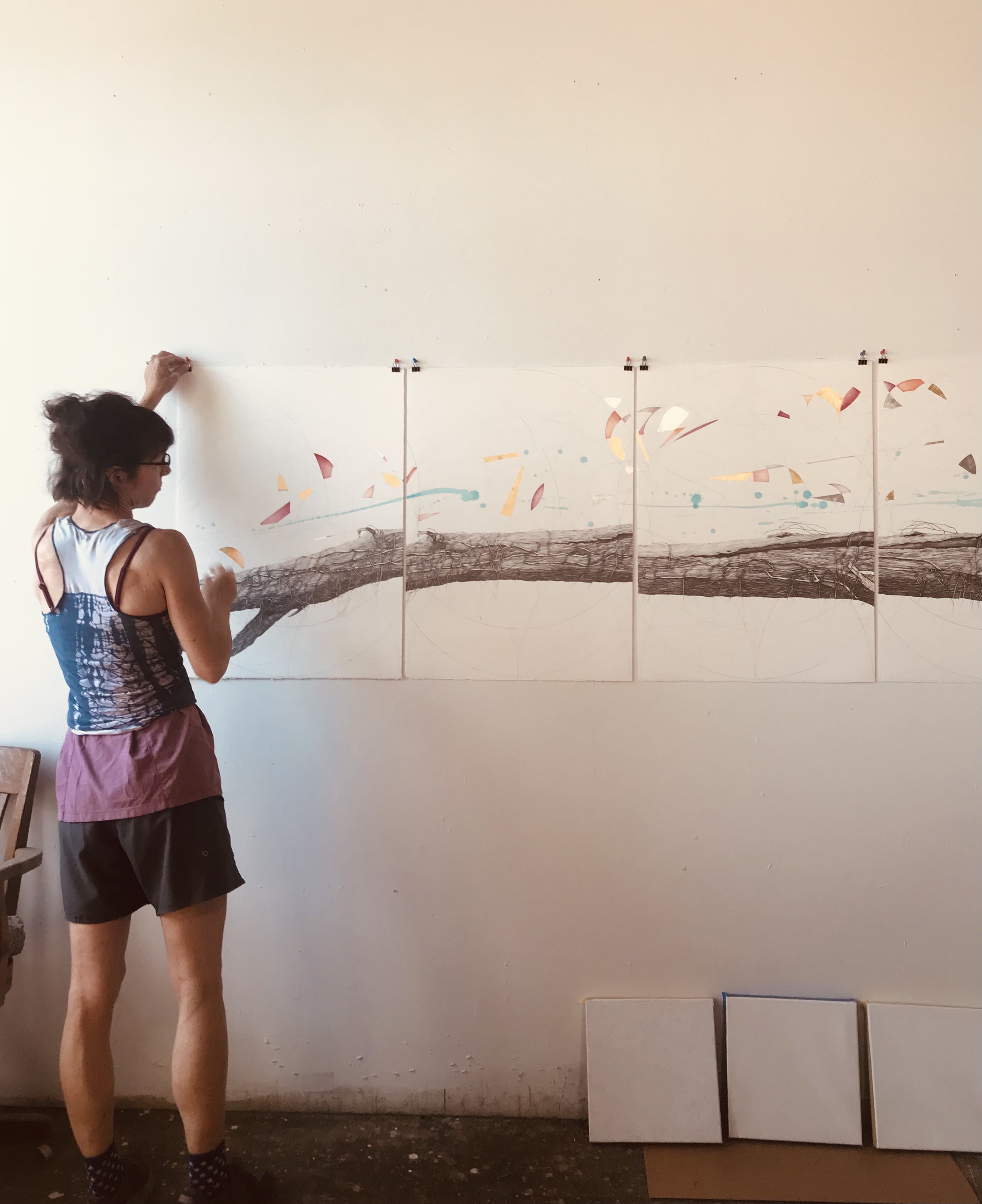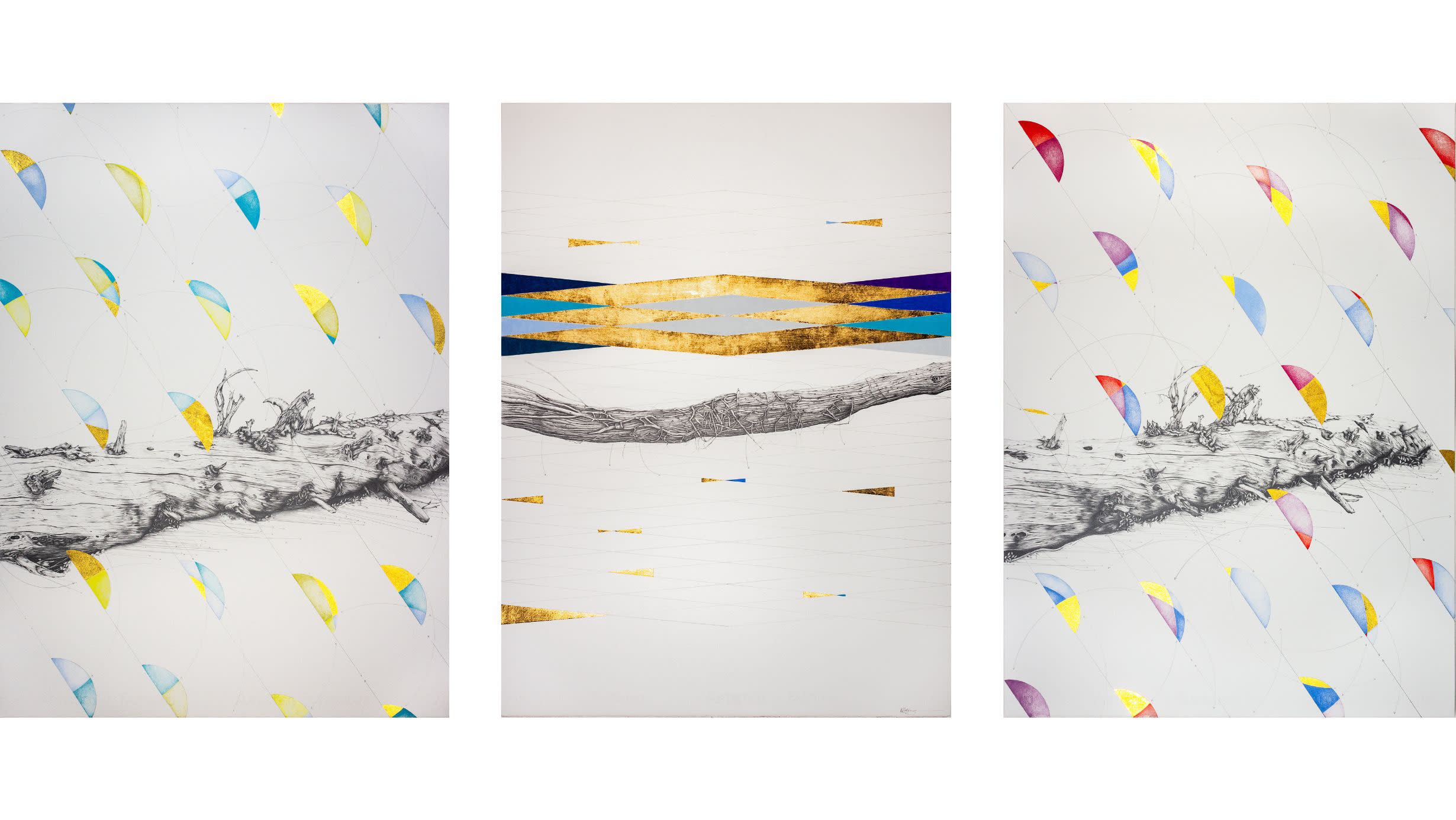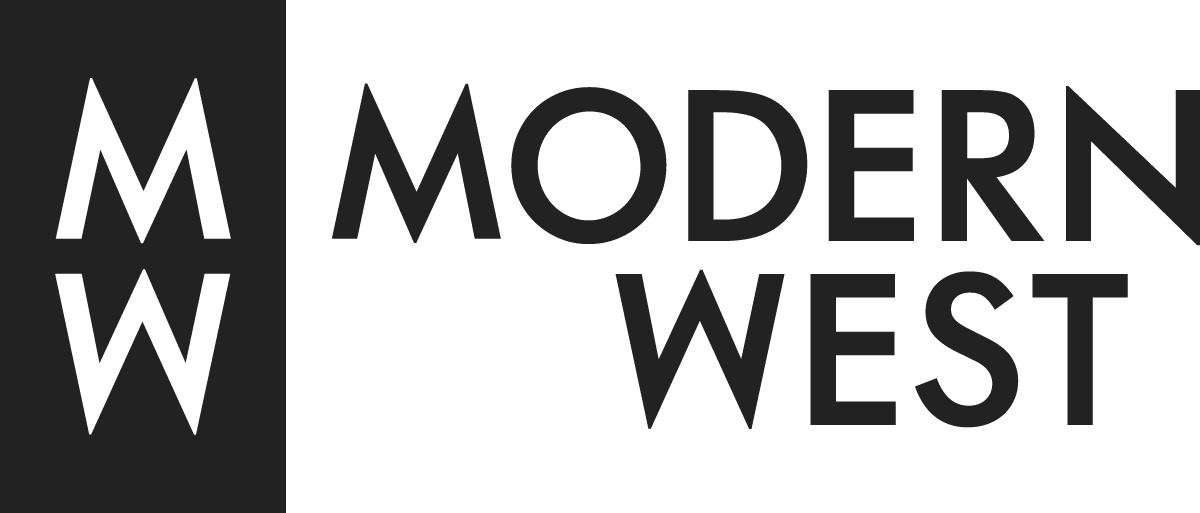
Can you speak to your background and evolution as an artist? When did you first begin making art?
I have been making art since I was a little kid, and I knew from a very young age that I was going to be an artist. At that point, I didn’t know what that meant, or how it would look or work, I just knew that that’s what I wanted to be and do with my life. I attended a liberal arts college with a major in fine arts but felt that I needed more experience. So I enrolled in a Masters program at the University of the Arts in Philadelphia. I was told by two of my professors that I should consider ‘not doing this’ as a career. It was devastating at the time, but also the motivation that I needed. I took it on and have been making art ever since.

Your work is so considered and intricate. Some of these graphite portrayals must take many hours. Is there a significance to the amount of time you spend?
Yes, the drawings take many hours to complete, but it’s more about becoming intimately familiar with the patterns in nature and the environments that I am looking at. The images, be it trees or rocks or what have you, are composed of years of growth, decay, the effects of weather and other natural elements, so the notion of time is definitely something I am interested in. There is also a meditative aspect to studying and drawing the lines/light/shadow of these natural objects. Creating space for sustained contemplation is a big part of my work.

Why do you choose to portray fallen and decaying trees?
I have always been interested in natural elements, and for the longest time I was studying Karl Blossfeldt’s botanical photographs. At a certain point, I started to study my own photographs of natural phenomena, particularly photographs of the landscape of Utah, but it was really the pandemic that led me to the trees. I had (temporarily) lost all my jobs, so I took longs walks to pass the time.
I started to notice these beautifully elegant structures on the ground in the woods near my house and became fascinated with the linework and patterning in the bark, their sculptural and figurative nature and more broadly, with the cycle of growth/decay/regeneration. Drawing trees is complicated, as you can get lost in the detail in the bark. This led me to think more deeply about mark making, like in a Rembrandt drawing, where hatch work looks incredibly realistic from a distance. In addition to trees, I have been studying rock formations and ideas around repetition, space (boundary-less and defined space) and the documentation of energy.

The backgrounds of your work are quite geometric and calculated — protractor-like circumference circles, arrows, neat and orderly designs — how are you connecting these wallpaper-references and almost mathematical patterns with the organic matter?
I am drawn to the landscape because natural phenomena don’t have to follow any particular order. Nature finds its own order, which at times may seem chaotic, but it makes sense, and with each action is a reaction (for example, when a tree falls, it creates a new ecosystem where one did not exist before). The geometric and decorative patterning is a more constructed system that represents the notion of time, the movement of energy, and how space is occupied. The ‘calculated’ patterns are the defined space, juxtaposed with the boundary-less space that is nature. I also feel like so many of the ‘defined’ shapes and patterns we encounter (whether maps, grids, decorative wall papers, etc) are derived from the natural world, and so this juxtaposition makes sense to me.

Why DO YOU USE GLITTER and gold leaf? Any significance there including those materials alongside traditional graphite? Also, is it intentional that you are using graphite — charred wood — to create work referencing trees?
Glitter and gold leaf add an interesting time element to the work, because they are always reflecting and constantly changing, depending on the light and the angle at which the piece is viewed. Their luminous surfaces are quite different from the graphite, and so they create an interruption or pause in the orientation. Additionally, gold leaf has historically been used in works of art to show devotion and/or to allow objects to be seen as ‘other worldly.’ For me, taking a (seemingly mundane) element (like a fallen tree) out of its natural environment and creating a new environment with materials such as gold leaf, elevates the subject to a new level of significance.
Honestly, I use graphite because I love drawing and the control it offers when making very fine and detailed marks, whether drawing trees or anything else!
Who or what have you been inspired by? What books are you reading, or what podcasts, music, or media are you listening to and watching?
One of the benefits of the original Covid lock down was that several arts organizations started online programming (or at least, that’s when I discovered it). The Dia Beacon hosted weekly zoom sessions on artists in their collection, Gagosian puts out a quarterly magazine featuring interviews, discussions, playlists, etc, and what I found is that almost every artist out there, no matter how famous, still struggles with the same basic questions – what to make (or paint or sculpt, etc), is it good, what do I want to say or address in my work. This is extremely comforting to me because it can get lonely in the studio at times, but it’s a shared experience and part of what it is to be an artist. That, and just keeping at it.
I am always discovering new artists who inspire me, either through their work or personal experiences, and then I have numerous favorites who influence me on a daily basis – Rembrandt and Cezanne for example, as well as more current artists like Gerhard Richter, Rudolf Stingel, Agnes Denes, Rashid Johnson to name a few. I often listen to music while in the studio, anything from classical to hip hop to electronic to instrumental. Philadelphia has a great local station, WXPN, so I’ll usually tune in to that. I recently discovered the Tim Ferris podcasts, and I usually am able to find a really interesting conversation to tune into while working.

Can you speak about one work in the INTERWOVEN exhibition – what was your process like creating that piece, and what lasting impact do you hope it has on viewers?
“Layers of Time” is a significant piece for me, in terms of the scale, and also in resolving how the upper half (the recognizable imagery of the mountain) relates to the lower half (geometrical shapes). It is also the first time (I think!) that I used collage elements to create the transition in the imagery. I had to sit with this one for a while before recognizing that it was finished. Honestly, I hope that whoever views the work comes to their own conclusions about what it might mean, what sort of response it generates, is it compelling (or not), etc…that’s the beauty of art! It’s a pretty personal experience and one that is unique to each individual.

Anything on your radar in the coming months or year?
I have a solo exhibition at Pentimenti Gallery in Philadelphia in early 2023, so I am busy working towards that, and in general always looking for opportunities to show and share my work.

